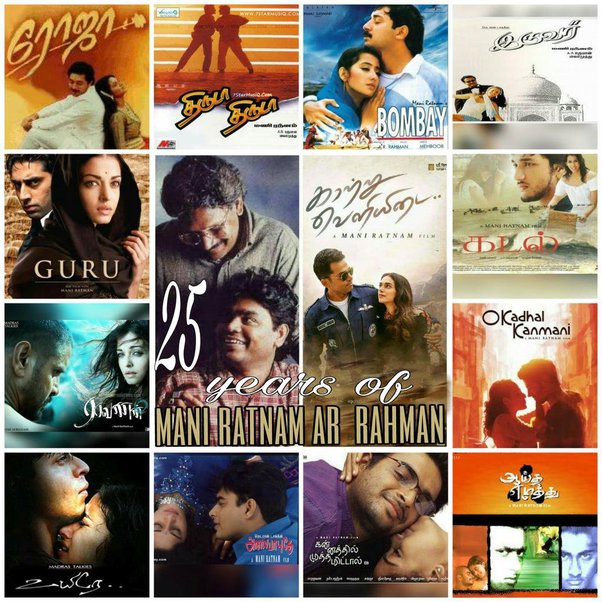Mani Ratnam stands as a towering figure in Indian cinema, renowned for his unparalleled storytelling prowess, visual mastery, and profound exploration of human emotions. With a career spanning over four decades, Ratnam has captivated audiences with his evocative narratives, unforgettable characters, and groundbreaking contributions to the world of filmmaking. In this extensive exploration, we delve into the cinematic universe of Mani Ratnam, dissecting his most acclaimed works and tracing the evolution of his distinctive style.
Early Career and Breakthrough:
Mani Ratnam’s journey in the world of cinema began in the early 1980s, where he made his directorial debut with the Kannada film “Pallavi Anu Pallavi” (1983). However, it was his Tamil film “Mouna Ragam” (1986) that catapulted him to stardom and established him as a filmmaker of extraordinary talent and vision. A poignant tale of love, marriage, and second chances, “Mouna Ragam” captivated audiences with its nuanced portrayal of relationships and its timeless music, setting the stage for a series of cinematic masterpieces to come.
The Mani Ratnam Aesthetic:
Central to Mani Ratnam’s cinematic universe is his keen eye for visual storytelling and his ability to evoke powerful emotions through imagery, music, and dialogue. From the lush landscapes of Kerala to the bustling streets of Mumbai, Ratnam’s films are characterized by their breathtaking cinematography, evocative soundtracks, and richly detailed settings, which transport audiences to another world and immerse them in the lives of his characters.
Moreover, Ratnam’s films are often distinguished by their exploration of complex themes and social issues, from the complexities of love and relationships to the challenges of contemporary society. Whether tackling topics such as communalism, terrorism, or political corruption, Ratnam infuses his narratives with a sense of urgency and relevance, challenging viewers to confront uncomfortable truths about the world around them and inspiring them to imagine a better future.
Iconic Collaborations and Unforgettable Performances:
A hallmark of Mani Ratnam’s films is his collaboration with some of the most talented actors in the Indian film industry, many of whom have delivered career-defining performances under his direction. From Manisha Koirala’s luminous portrayal of a conflicted woman torn between love and duty in “Bombay” (1995) to Abhishek Bachchan’s electrifying turn as a hot-headed cop in “Yuva” (2004), Ratnam has a knack for eliciting nuanced and powerful performances from his actors, elevating his films to a level of emotional resonance that is truly extraordinary.
Moreover, Ratnam’s films are often distinguished by their unforgettable music, with each soundtrack featuring a collection of timeless songs that have become an integral part of Indian popular culture. From the soul-stirring melodies of “Roja” (1992) to the pulsating rhythms of “Dil Se..” (1998), Ratnam’s collaborations with composer A.R. Rahman have produced some of the most iconic music in Indian cinema, earning both critical acclaim and commercial success.
Criticism and Controversy:
Despite his unparalleled success, Mani Ratnam has not been immune to criticism and controversy. His films have often courted controversy for their portrayal of sensitive subjects and their interpretation of historical events. “Bombay,” in particular, faced backlash from certain groups for its depiction of inter-religious marriage and its portrayal of communal violence. Yet, through it all, Ratnam has remained steadfast in his commitment to artistic integrity and creative freedom, refusing to be cowed by external pressures and standing by his vision with unwavering conviction.
Legacy and Impact:
As Mani Ratnam continues to push the boundaries of Indian cinema with his visually stunning spectacles and emotionally resonant narratives, his influence on the industry and the next generation of filmmakers remains undeniable. Through his bold storytelling, breathtaking visuals, and unforgettable characters, Ratnam has redefined the possibilities of Indian cinema and inspired a new generation of filmmakers to aspire to greatness.
In conclusion, Mani Ratnam’s films stand as a testament to the power of cinema to transport, inspire, and move audiences in ways that are both profound and unforgettable. With his unparalleled talent, vision, and passion for storytelling, Ratnam has left an indelible mark on the landscape of Indian cinema and earned his place among the pantheon of cinematic legends. As we continue to marvel at the beauty and majesty of his films, we are reminded of the transformative power of art to touch the heart and elevate the human spirit.
